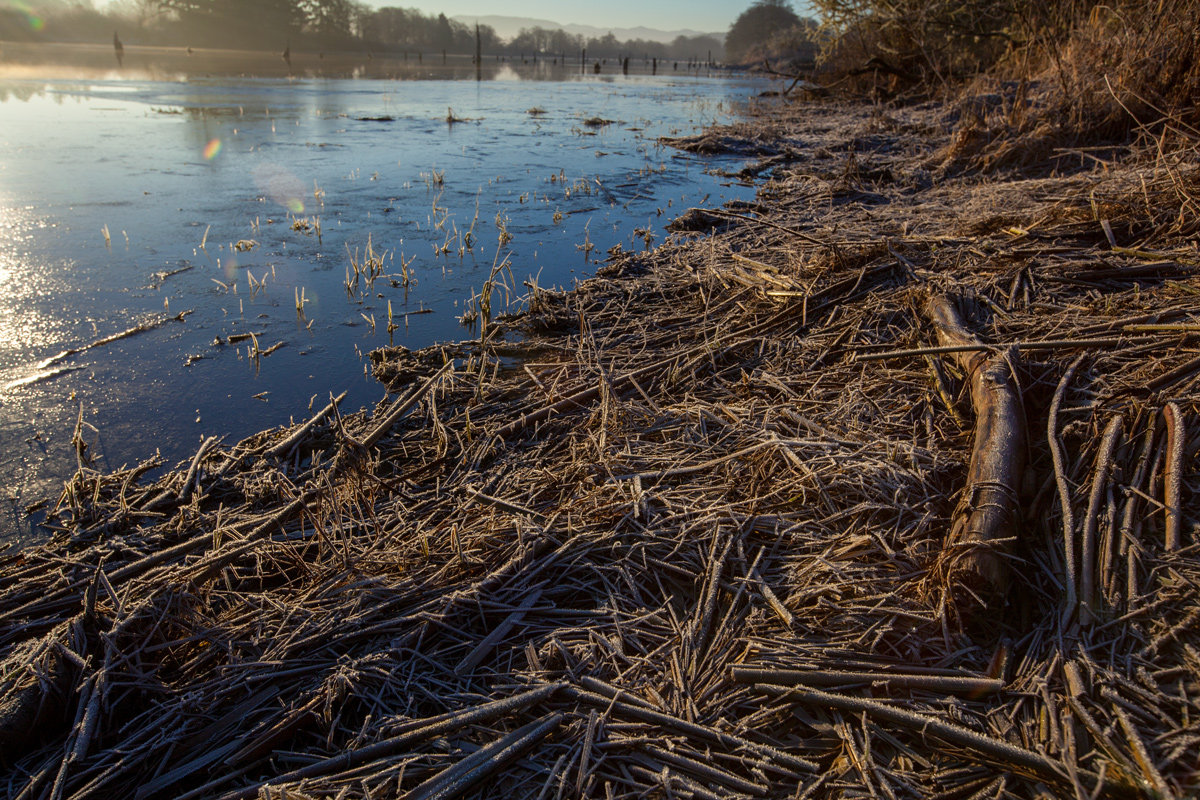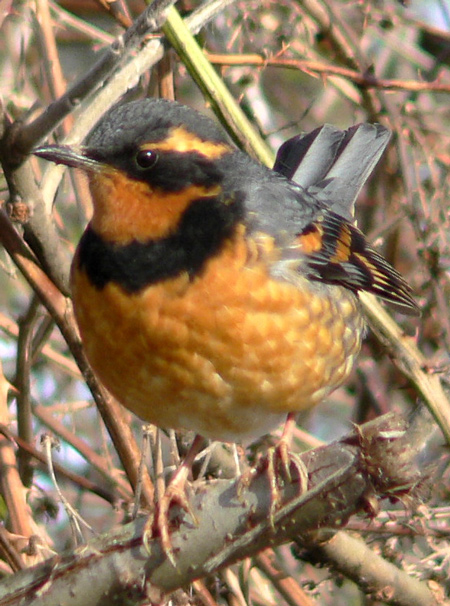At Fort Clatsop near present Astoria, Oregon, Sgt. Gass takes a hunting party up the river but due to ice, must turn around. After helping other hunters at the the salt works, Pvt. Joseph Field returns with news of killed elk. Charbonneau brings Lewis a new bird—the varied thrush.
A Mysterious Bird
by Yellowstone Public Radio[1]Originally aired weekdays by Yellowstone Public Radio during the Bicentennial observance of 2003-2006. Narrated by Hal Hansen. Scripts by Whit Hansen and Ed Jacobson. Produced by Leni Holliman. © … Continue reading
Ice on the Netul River
Fort Clatsop National Historic Park
© 21 January 2013 by Kristopher K. Townsend. Permission to use granted under the Creative Commons Attribution-Share Alike 4.0 International license.
Stopped by Ice
This was a clear cold morning.— Seven of us went up the small river in a canoe to hunt; but after we had gone a mile, we were stopped by the ice and had to return to the fort.
—Patrick Gass
Elk for the Salt Makers
Jo Field arrives this evening, informs us That he had been hunting in Company with gibson and Willard for the last four days in order to obtain some meat for himself and the other Salt-makers, and that he had been unsucksessfull untill yesterday evening when he had fortunately killed two Elk, about six miles distant from this place and about 8 from the Salt works; he left gibson and Willard to dry the meat of those Elk, and had come for assistance to carry the meat to the Salt Camp;
—Meriwether Lewis
A Varied Thrush
Charbono [Charbonneau] found a bird dead lying near the fort this morning and brought it to me I immediately recognized it to be of the same kind of that which I had seen in the Rocky Mountains on the morning of the 20th of September last . . . . this is a beatifull little bird. I have never heard it’s note it appears to be silent. it feeds on berries, and I beleive is a rare bird even in this country, or at least this is the second time only that I have seen it.—
—Meriwether Lewis
Weather Diary
aspect of the weather at rise
Wind at rise
Weather at 4 OC. P.M. Wind at 4 OC. P.M. fair after clouds N. E. fair N. E 31st this morning is plesant, the night was clear and cold notwithstanding the could weather the Swan white Brant geese & ducks still continue with us; the sandhill crain also continues.— the brown or speckled brant are mostly gone some few are still to be seen the Cormorant loon and a variety of other waterfowls still remain. The Winds from the Land brings us could and clear weather while those obliquely along either coast or off the Oceans bring us warm damp cloudy and rainy weather. the hardest winds are always from the S. W.
The blue crested Corvus bird has already began to build it’s nest. their nests are formed of small sticks; usually in a pine tree.—
Great numbers of Ravens, and a Small black Crow are continually about us. The pale yellow Streiked and dove coloured robin is about, also the little brown ren or fly-catsch which is a little larger than the humming bird.
—Meriwether Lewis[2]To assist the reader, the editor of this web page has omitted the “Day of the month” column and spelled out some abbreviations.
Fort Clatsop is a High Potential Historic Site along the Lewis and Clark National Historic Trail managed by the U.S. National Park Service. The site is managed by the Lewis and Clark National and State Historic Parks.
Notes
| ↑1 | Originally aired weekdays by Yellowstone Public Radio during the Bicentennial observance of 2003-2006. Narrated by Hal Hansen. Scripts by Whit Hansen and Ed Jacobson. Produced by Leni Holliman. © 2003 by Yellowstone Public Radio. |
|---|---|
| ↑2 | To assist the reader, the editor of this web page has omitted the “Day of the month” column and spelled out some abbreviations. |




